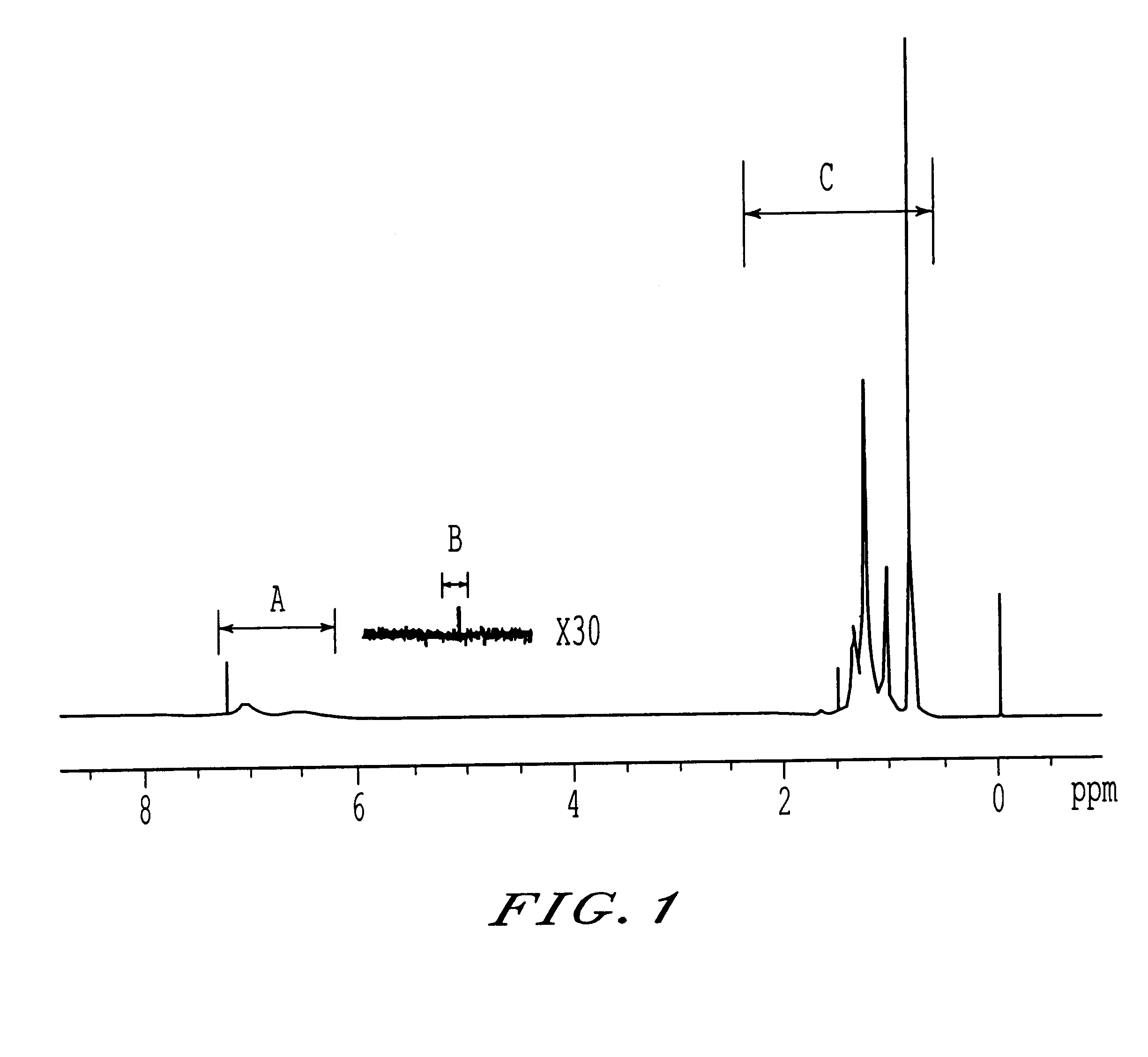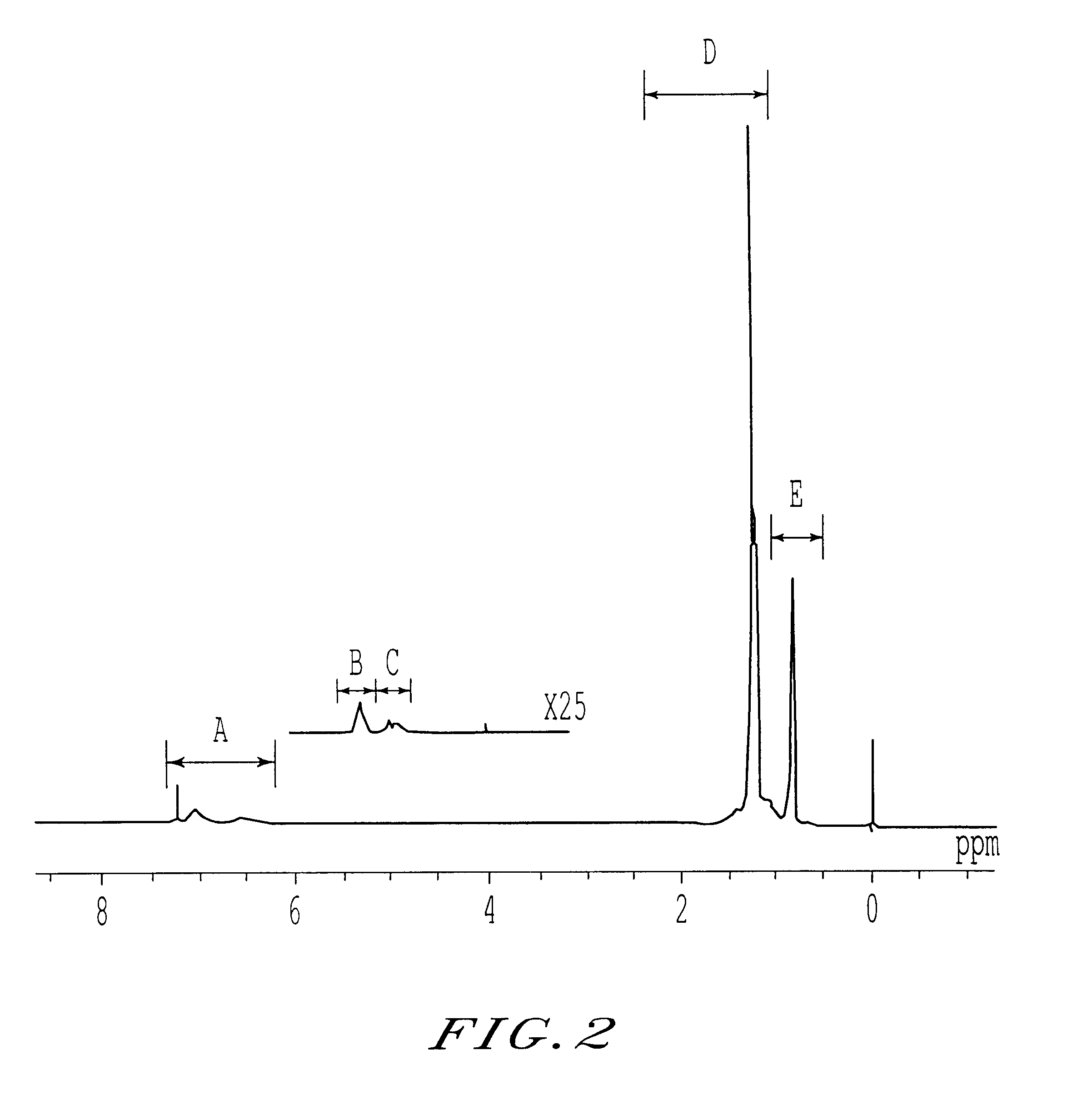Polypropylene compositions for automotive parts
a technology of polypropylene composition and automotive parts, applied in the direction of film/foil adhesives, adhesives, etc., can solve the problems of insufficient rigidity and mechanical strength, insufficient fluidity, and production of nothing but a short shot molding, etc., to achieve the effect of reducing the shrinkage factor and dimensional change of the molding, reducing the rigidity of the molding, and reducing the molding cos
- Summary
- Abstract
- Description
- Claims
- Application Information
AI Technical Summary
Problems solved by technology
Method used
Image
Examples
synthesis example 2 (
PP-2)
1 Polymerization of propylene
A 10 l pressure resistant autoclave which had been purged with nitrogen and dried sufficiently was charged, in a stream of nitrogen, with 6 l of n-heptane which had been sufficiently dehydrated with molecular sieve. Subsequently, the autoclave was charged with 7.5 mmol of triethylaluminum (TEA) and 0.5 mmol of dicyclopentyldimethoxysilane (DCPDMS), and then the nitrogen therein was replaced with propylene at 80.degree. C. Subsequently, there were introduced therein under stirring, hydrogen at 4.0 kg / cm.sup.2 by the use of a precision pressure gauge and further propylene until the pressure in the reaction system reached 8.0 kg / cm.sup.2. The preparatory polymerization catalyst which had been obtained in the preceding item 3 was fed in the autoclave in an amount of 0.05 mmol expressed in terms of Ti atom and then, propylene was continuously introduced in the autoclave so as to attain a reaction pressure of 8.0 kg / cm.sup.2 to proceed with a first stage ...
synthesis example 3 (
PP-3)
1 Polymerization of propylene
The procedure in Synthesis Example 1 was repeated to proceed with polymerization reaction except that hydrogen was introduced in the reaction system at 3.2 kg / cm.sup.2.
2 Copolymerization of propylene / ethylene
The procedure in Synthesis Example 2 was repeated to obtain 2200 g of propylene / ethylene copolymer except that hydrogen was introduced in the reaction system at 0.01 kg / cm.sup.2, the flow rate ratio of ethylene / propylene was set to 0.3 / 1.0, and the polymerization reaction was carried out for 25 minutes.
synthesis example 4 (
PP-4)
1 Polymerization of propylene
The procedure in Synthesis Example 1 was repeated to proceed with polymerization reaction except that hydrogen was introduced in the reaction system at 3.2 kg / cm.sup.2 G.
2 Copolymerization of propylene / ethylene
The procedure in Synthesis Example 2 was repeated to obtain 2150 g of propylene / ethylene copolymer except that hydrogen was introduced in the reaction system at 0.01 kg / cm.sup.2 G, the flow rate ratio of ethylene / propylene was set to 1.0 / 1.0, and the polymerization reaction was carried out for 20 minutes.
PUM
| Property | Measurement | Unit |
|---|---|---|
| Temperature | aaaaa | aaaaa |
| Fraction | aaaaa | aaaaa |
| Fraction | aaaaa | aaaaa |
Abstract
Description
Claims
Application Information
 Login to View More
Login to View More - R&D
- Intellectual Property
- Life Sciences
- Materials
- Tech Scout
- Unparalleled Data Quality
- Higher Quality Content
- 60% Fewer Hallucinations
Browse by: Latest US Patents, China's latest patents, Technical Efficacy Thesaurus, Application Domain, Technology Topic, Popular Technical Reports.
© 2025 PatSnap. All rights reserved.Legal|Privacy policy|Modern Slavery Act Transparency Statement|Sitemap|About US| Contact US: help@patsnap.com


